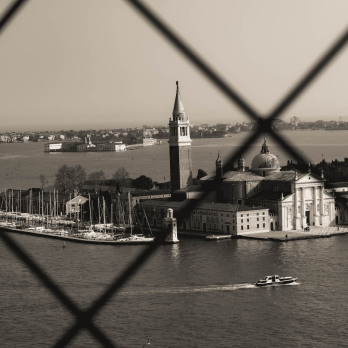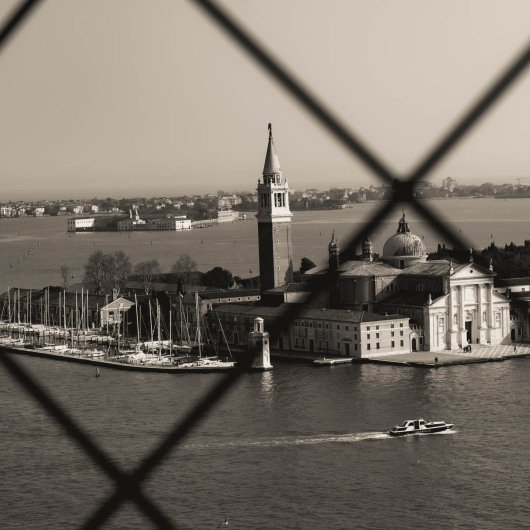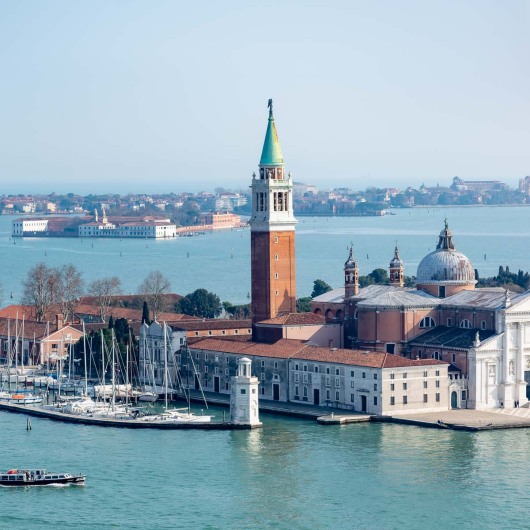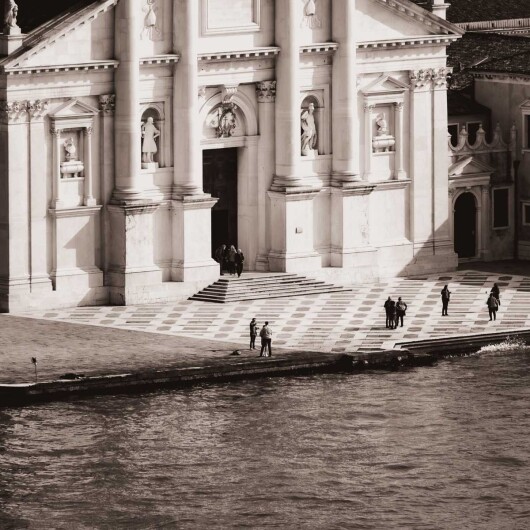San Giorgio Maggiore
Your Deep Dive into San Giorgio Maggiore, Venice’s Serene Island Sanctuary
Palladio’s Sacred Legacy
Prior to the construction of his church, San Giorgio Maggiore protected St. Mark's relics. Fires had destroyed older structures, but in 1566, Andrea Palladio was tasked with reconstructing. His Renaissance masterwork, inspired by Roman temples, was finished in 1592. It was revered for its harmony, inspiring global church design and being immortalized in Claude Monet's bright 1908 paintings.
Island Across Time
San Giorgio Maggiore is located on its own calm island, just across St. Mark's Basin from Venice's bustling center.
It may be reached via vaporetto (Line 2 or scenic Line 82) from the San Zaccaria or Salute stops. The five-minute cruise provides stunning vistas, bringing you to a secluded wharf where the church's majestic exterior welcomes you in peaceful contrast.
Saints, Doges, and Power
San Giorgio Maggiore's tradition began in 982 AD, when Doge Tribuno Memmo gave the island to Benedictine monk Giovanni Morosini. He established a monastery and cathedral dedicated to Saint George, Venice's original patron.
The monastery quickly achieved significant prominence, with its abbot gaining a seat in the Venetian Senate, emphasizing its religious and political importance in Venice's history.

Geometry, Light, and Grace
More than a church, it is Palladio's architectural masterwork. Its brilliant, harmonic interior boasts a large nave, soaring barrel vault, & finely balanced proportions. Unlike Venice's gloomy Gothic rooms, this church exudes clarity and order. The revolutionary double-façade achieves remarkable symmetry—visible from St. Mark's Square—and embodies Renaissance ideals via pure architectural poetry.
Divine Drama in Paint
Inside, Tintoretto's visionary painting enriches the holy place. His Last Supper in the former refectory is filled with light and diagonal energy, reconstructing the scene in dynamic realism. Crucifixion, Entombment, and Resurrection in the church highlight his aggressive brushwork and emotional depth, transforming these works into compelling spiritual encounters rather than just ornaments.
Midday Rush, Missed Magic
Avoid going between 11:30 AM and 3:00 PM since cruise crowds peak, vaporetto boats fill up, and the peaceful mood fades. Though San Giorgio seldom becomes tumultuous, the influx of guests disrupts reflection. Harsh noon light also flattens Tintoretto's artwork and degrades photography.
Plan for a more relaxing experience in the morning or late afternoon.
Venice from Above
Don't miss the 99-meter bell tower of San Giorgio Maggiore. It has a breathtaking 360-degree vista and is significantly less crowded than St. Mark's.
Venice expands from here, with the Bacino di San Marco, the Grand Canal, Dorsoduro, Lido, and the distant lagoon islands. Most dramatically, it faces St. Mark's Square directly, providing both artistic inspiration and spatial clarity for the city.
Golden Hours of Grace
The timing of your visit changes everything. Arrive early (8:30-10:30 AM) for a tranquil setting with gentle light illuminating Tintoretto's art and views across the basin. Late afternoon (after 3 p.m.) affords golden sunlight on the façade, less crowds, and breathtaking sunset views from the campanile.
These moments capture San Giorgio Maggiore's beauty in its most intimate and poetic form.

Sacred Space, Shared Respect
San Giorgio Maggiore is more than just a historical site; it is also an operating church. Dress modestly; shoulders and knees must be covered. Carry a light scarf if necessary. Inside, keep your voice low and your phones silent.
Silence acknowledges both the monks who live and worship here, as well as all people looking to ponder in this peaceful, spiritual environment.
Mindful Moments Within Walls
Photography is permitted (no flash), but not during services. Be discreet—don't block paths or use tripods. Respect secluded monastic regions and avoid touching artworks or sacred spaces. Stay on the marked trails.
Above everything, slow down. San Giorgio Maggiore promotes peaceful, contemplative contemplation; take the time to fully absorb its art, light, and spiritual aura.
Monet’s Venetian Muse
Claude Monet's 1908 visit to Venice became a near-mythic artistic quest.
Despite his cataracts, he incessantly painted San Giorgio Maggiore from his hotel across the basin, enthralled by its ever-changing light. He returned to it often, convinced that this picture captured the essential soul of Venice—a luminous challenge he couldn't resist expressing on canvas.
Beyond the Bell Tower
San Giorgio Maggiore is a destination in and of itself, whether you stroll its calm paths, sit by the canal, or explore the monastic gardens. Giudecca is nearby and provides calm lanes, Palladio's Redentore church, and waterside cafés.
Visit Dorsoduro for art and architecture treasures. Alternatively, board Line 1 for a picturesque Grand Canal tour that provides a new perspective on Venice.
Sanctuary from the Serpent
According to local mythology, a terrifying dragon once haunted San Giorgio Maggiore, polluting the waterways and endangering early settlements. According to legend, Benedictine monks led by Giovanni Morosini banished the beast with prayer and sacred rites. This tale, which recalls St. George's dragon-slaying, represents the island's transition into a sacred haven from chaos.




































